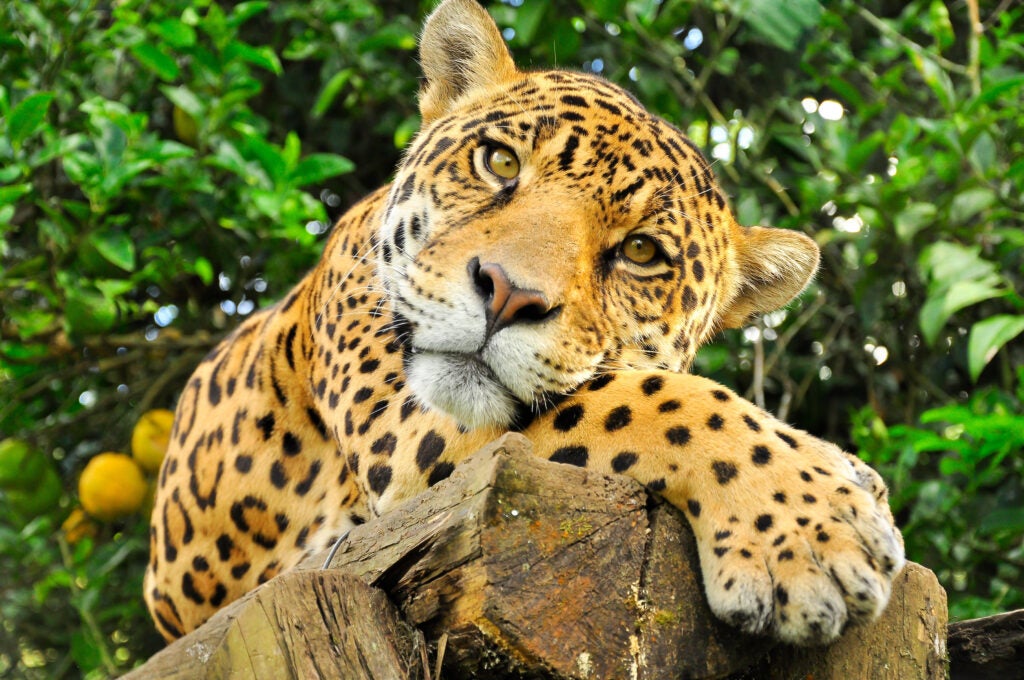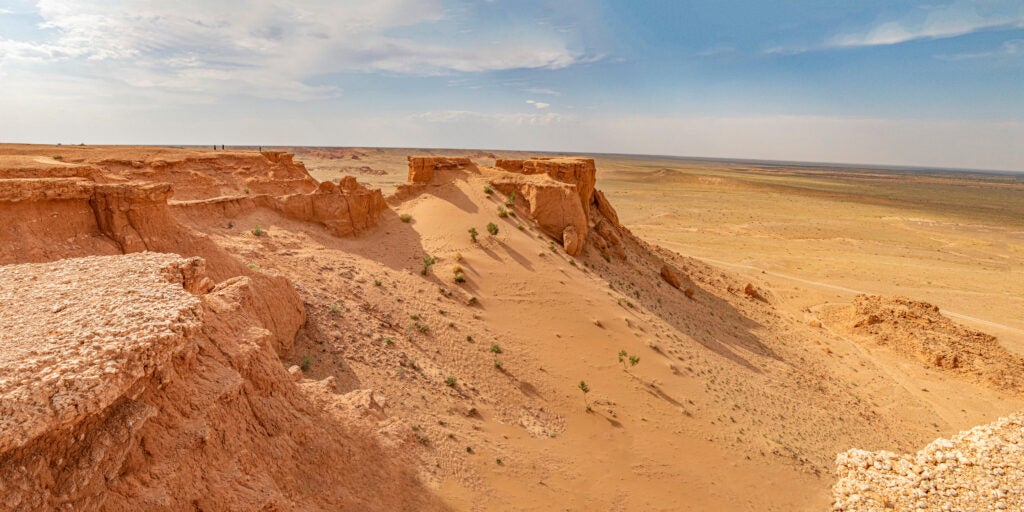Hungry Worms and High-Tech Jaguars
Creative local solutions to resource challenges across the world.
By Maya Snyder (SFS ‘24), Common Home Editor

Stingless bee colonies, worm compost, and mangrove forests – these are just a few examples of nature-based solutions that reconcile competing needs between humans and the environment.
In conservation as in life, rarely does a one-size solution fit all. We looked at small organizations across the world – from Panama, Mexico, Kenya, Palau, Mongolia, and the United States – to showcase the creative ways they are protecting their water and land resources. Whereas human resource consumption and environmental protection are often in direct competition, these organizations have created “win-wins” that are well suited to their local realities.
In so doing, they push towards the UN’s 17 Sustainable Development Goals (SDGs), of which today we dive into those regarding land ( #15), marine resources (#14) and clean water and sanitation (#6).
ON LAND
On land, grassroots organizations are leading efforts to restore forests, protect biodiversity, and combat land degradation.
Yaguará Foundation, Panama
The Yaguará Foundation, for instance, seeks to build a more harmonious relationship between two of Panama’s residents: humans and jaguars. Established in 2017, Yaguará is based near a buffer zone of the Darién National Park, a critical jaguar corridor.
As human activity like cattle ranching continues to encroach into the dense rainforests of the Amazon Basin, the jaguar population is increasingly threatened by habitat fragmentation, poaching, and human-wildlife conflict. The conservation status of jaguars is “Near Threatened.”
One of the primary reasons for jaguar deaths in Panama is rancher retaliation for the killing of livestock. Yaguará hopes to mitigate human-wildlife conflict by using camera traps and GPS collars to track jaguars’ hunting habits and roaming areas. The group uses the collected data to inform their conservation approaches. Anti-predation measures, such as the construction of electric fences, help keep jaguars out of ranches. Sustainable production and management models, like more efficient use of cattle farms, helps keep ranchers from encroaching onto jaguar territory.
Beyond a focus on alleviating active conflict, Yaguará seeks to demonstrate that the coexistence between humans and wildlife can be prosperous. In addition to disseminating free educational resources the foundation is focused on developing alternative livelihoods for locals which benefit from the presence of jaguars, like ecotourism and agroforestry industries.

Bayan Dukhum Cooperative, Mongolia
In the Gobi drylands of Mongolia, the Bayan Dukhum Cooperative is combating soil erosion and desertification with sustainable agroforestry techniques. In a region where the majority of the population is dependent on the land and their livestock, pasture restoration is critical.
The cooperative’s approach targets maximizing land efficiency and land productivity. The production of crops like lucerne and silage, for instance, is doubly beneficial. As grasses, they contribute to vegetation that helps combat soil degradation; as drought-resistant forms of livestock fodder, they reduce food vulnerability.
It’s a cyclical process: any waste produced by the livestock can be made into biohumus, which promotes more vegetation growth to curb desertification. Vermicompost, a type of biohumus, can be made using livestock manure and worms. The nutrient-rich organic fertilizer contains one hundred times more beneficial bacteria and fungi than ordinary soil.
When the resources of the land are used efficiently, both the land and its people benefit. After implementing these sustainable strategies, the cooperative recorded a twenty percent increase in member households’ incomes. Annual production grew to 120 tons of hay, 80 tons of fodder, 35 tons of vegetables and potatoes, and one ton of barley flour– accounting for three-quarters of the soum’s agricultural production.
Kuxtalil Cooperative, Mexico
In Mexico, the Kuxtalil co-operative network uses meliponiculture to support their communities and local environment. Meliponiculture, a practice dating back thousands of years in Mayan culture, is the breeding and management of native stingless bees. Over ninety women represent the network, spread out across twelve honey production units in Yucatán.
Environmental conservation is central to the network’s mission. Xunáan Kaab, the species of bees native of the Yucatán region, is under threat as a result from environmental degradation and deforestation. They are essential pollinators of the region’s crops and native vegetation. By preserving this vital player in their local ecosystem, the work of the Kuxtalil network is strengthening biodiversity in Mexico.
But the benefits of bees aren’t just environmental. The honey produced by the Melipona bee contains medicinal properties, and compared to other types of honey, is less likely to crystallize, making it more appealing for consumers. Through their brand, Yaal-Kaab, the Kuxtalil network sells this honey, along with other honey-based products. As a result of this new source of income, the women of the network are more independent, becoming the primary supporters of their families and assuming roles of larger influence in their communities.

NEAR WATER
In communities near water, environmental advocates are expanding access to clean water while also ensuring the sustainable use of marine resources.
Mikoko Pamoja, Kenya
To increase the resilience of its coastal communities, Mikoko Pamoja is restoring Kenya’s mangrove forests through the sale of carbon credits (permits to produce a certain amount of carbon emissions). The project is accredited through Plan Vivo Foundation, an international NGO that sells one Plan Vivo Certificate (PCV) for every one metric ton of CO2 equivalent sequestered.
Capitalizing off of mangrove forests’ huge capacity for carbon sequestration, Mikoko Pamoja secured validation to sell at least 3,000 metric tons of CO2-equivalent per year through 2033. Individuals participating in the Voluntary Carbon Market (VCM) then buy the project’s PVCs, generating an annual revenue of approximately $12,000.
Using the income from carbon credits, Mikoko Pamoja funds its mangrove rehabilitation efforts to provide both immediate and long-term benefits for the local community. Mangroves are crucial to supporting the region’s fisheries– the trees’ detritus and knotted roots provide essential nutrients and protection for juvenile fish. Mangrove forests also serve as a coastal buffer, defending the land from storms and mitigating saltwater contamination of crops and drinking water.
Kelp Farming, Alaska
In Alaska, organizations like Sea Grant Alaska and Native Conservancy, are supporting the development of kelp farms. A historically traditional food source for many indigenous peoples in Alaska, kelp is now being increasingly turned to for its potential as a regenerative industry.
Growing kelp is low impact, meaning it requires no fertilizers, pesticides, freshwater, or arable land. Seaweed contributes critical support to marine life, providing habitats and nutrients to a variety of fishes. A fast-growing plant, kelp is also capable of sequestering large amounts of carbon.
Once harvested, the edible and nutrient-rich seaweed can help strengthen local food sovereignty and security. It can also be sold, providing a sustainable supplementary source of income for the local region and diversifying the economies of Alaska’s coastal communities.
Ngaraklidm Women’s Organization, Palau
Ngaraklidm Women’s Organization in Palau is reviving taro fields to protect the seascape from sedimentation. Like mangroves, taro is an effective sediment filter. When built near waterways, they keep water and soil within farms, mitigating agricultural runoff into the ocean and protecting local reefs and fisheries.
In addition to their environmental benefits, the taro fields are also culturally significant. Taro cultivation is an 800 year old practice that was once in danger of being forgotten. In fact, the women of the Ngaraklidm organization originally established the taro field project in 1950 with the goal of preserving this important part of their culture– and they succeeded.
By the project’s completion in 2015, the group had established an additional 144 taro fields and inspired the development of taro cultivation projects in four other sites.
Locally-targeted, environmental innovations like these are fascinating in their use of unique, nature-based solutions. More importantly, however, they demonstrate that creating sustainable communities doesn’t require the sacrifice of humans’ access to food, water, or shelter. Rather, with the right tools, sustainable solutions (as the SDGs promote) can help preserve– or even enhance– the economies, traditions, and health of communities for years to come.
These projects were carried out with the funding and support of organizations like The Equator Initiative, The Science for Nature and People Partnership, and the Global Environment Facility’s Small Grants Programme. If you’re interested in learning more, you can discover other locally-targeted solutions and read about their other environmental efforts on their websites.
